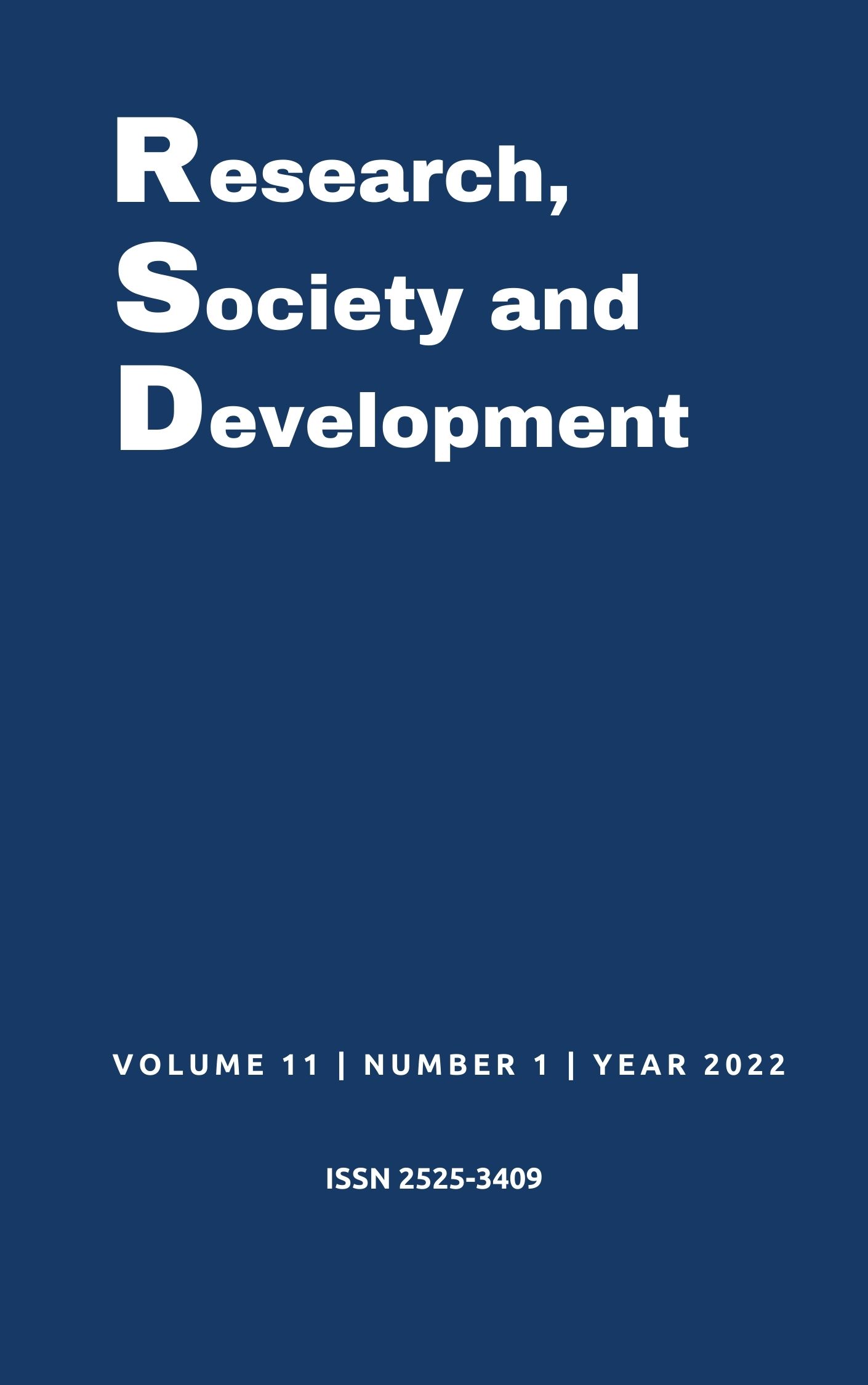The literary production and the impact of approach of Medical students during their training: integrative review
DOI:
https://doi.org/10.33448/rsd-v11i1.25139Keywords:
Medicine in Literature , Medical Education , Medical Students, Medicine, Literature.Abstract
In a context of dialogue between literature and medicine, the latter dealing with the human condition and its characteristics, we have the physician as an important assistant, prioritizing listening, proposing, and guiding the conduct directed to the patient. This is the main actor in the scenario of humanized care. Thus, this study compiles the information available in scientific productions about the impact of the approach of medical students to literary production during their training. Integrative literature review with a search carried out in the virtual libraries BVS, SciELO, and PubMed, with eight articles analyzed. These were divided into three axes: a) behavioral change, b) sensitivity and ethical issues, and c) critical thinking, communication, and dialogue. Teaching the art of medicine goes beyond technical-scientific training: it is necessary to increasingly prepare future physicians to deal with the dilemmas, conflicts, and plurality of opinions in the health field and medicine.
References
Almeida, A. L. & Portella, D. L. (2021) A avaliação do pensamento crítico: uma abordagem a estudantes de medicina brasileiros. Research, Society and Development, 10(12) e122101220203, http://dx.doi.org/10.33448/rsd-v10i12.20203
Amorim, K. P. C. & Araújo, E. M. (2013) Formação ética e humana no curso de medicina da UFRN: uma análise crítica. Revista Brasileira de Educação Médica 37(1), 138-148. <https://doi.org/10.1590/S0100-55022013000100020>. https://doi.org/10.1590/S0100-55022013000100020.
Amorim, M. P. & Silva, I. (2014). Instrumento de avaliação do pensamento crítico em estudantes e profissionais de saúde. Psicologia, Saúde e Doenças, 15(1):122-137. https://www.redalyc.org/articulo.oa?id=36231157011
Assunção, L. F., Melo, G. C. M. P. & Maciel, D. T. (2008). Relação Médico-paciente Permeando o Currículo na Ótica do Estudante. Revista Brasileira de Educação Médica 32 (3), 383-89. http://www.scielo.br/pdf/rbem/v32n3/v32n3a13.pdf
Balbi, L., Lins, L. & Menezes, M. S. (2017). A Literatura como Estratégia para Reflexões sobre Humanismo e Ética no Curso Médico: um Estudo Qualitativo. Revista Brasileira de Educação Médica., 41(1), 152-161. https://doi.org/10.1590/1981-52712015v41n1rb20160049.
Biasco, P. G., Gallian, D. M. C., Roncoletta, A. F. T. & Moreto, G. (2005). Cinema para o estudante de medicina: um recurso afetivo/efetivo na educação humanística. Revista Brasileira de Educação Médica. 29(2):119-128 https://doi.org/10.1590/1981-5271v29.2-018
Elder, N., Tobias, B., Lucero-Criswell, A. & Goldenhar, L. (2006) The art of observation: impact of a family medicine and art museum partnership on student education. Fam Med;38(6):393-98.
Faria, M. V. E. & Junior da Costa, C. (2020). Humanizando a Medicina por meio da Comunicação & Arte. Revista Extensão & Cidadania, 8(14), 108-118. https://doi.org/10.22481/recuesb.v8i14.7822
Garlaschelli, R. (2011). Medicine and literature: a section in a medical university library. Health Information & Libraries Journal. 28(2):137-142. 10.1111/j.1471-1842.2011.00931.
Griffard, P. B., Mosleh, T. & Kubba, S. (2013). Developing the Inner Scientist: book club participation and the nature of science. Cbe—Life Sciences Education, [S.L.], 12(1):80-91. American Society for Cell Biology (ASCB). http://dx.doi.org/10.1187/cbe.12-02-0020.
Han, H, & Lopp, L. (2013) Writing and reading in the electronic health record: an entirely new world. Med Educ Online. 5(18):1-7. 10.3402/meo.v18i0.18634
Kim, D. H. (2019). Evaluation of critical thinking course for premedical students using literature and film. Korean J Med Educ. 31(1):19-28, 10.3946/kjme.2019.115.
Mairot, L. T. S., Costa, B. B. G., Heringer, T. P. M., Borges, R. C. & Moura, E. P. (2019). As Artes na Educação Médica: Revisão Sistemática da Literatura. Rev. bras. educ. med. 43(4)54-64, http://dx.doi.org/10.1590/1981-52712015v43n4rb20180146.
Naghshineh, S., Hafler, J. P., Miller, A. R., Blanco, M. A., Lipsitz, S. R., Dubroff, R. P. et al. (2008) Formal art observation training improves medical students visual diagnostic skills. J Gen Intern Med; 23(7):991-97.
Prabhu, G. (2018) Medical themes in a literature classroom: An alternate perspective on Medical Humanities pedagogy in India. Indian Journal of Medical Ethics, 4(1) 35-46.
Remich, R., Naffziger-Hirsch, M. E., Gazley, J. L., & Mcgee, R. (2016). Scientific Growth and Identity Development during a Postbaccalaureate Program: results from a multisite qualitative study. Cbe-Life Sciences Education. 15(3):15-25. American Society for Cell Biology (ASCB). http://dx.doi.org/10.1187/cbe.16-01-0035.
Rodriguez, J. E., Welch, T. J., Saunders, C. & Edwards, J. C. (2013). Students' perceptions of the impact a creative arts journal has on their medical education. Fam Med. 45(8):569-571.
Scliar, M. (2004) Medicina e Literatura. Faculdade de Medicina da UFMG.
Souza, M. T., Silva, M. D. & Carvalho, R. (2010). Revisão Integrativa: O que é e como fazer. Einstein. 8(1 Pt 1):102-106.
Tapajós R. (2003) HIV/AIDS in the visual arts: applying discipline-based art education (DBAE) to medical humanities. Med Educ;37(6):563-70.
Downloads
Published
Issue
Section
License
Copyright (c) 2022 Raimundo José Arruda Bastos; Marcos Miranda Vasconcelos; Mariana Keli Ferreira dos Santos Hansen; Deborah Pedrosa Moreira

This work is licensed under a Creative Commons Attribution 4.0 International License.
Authors who publish with this journal agree to the following terms:
1) Authors retain copyright and grant the journal right of first publication with the work simultaneously licensed under a Creative Commons Attribution License that allows others to share the work with an acknowledgement of the work's authorship and initial publication in this journal.
2) Authors are able to enter into separate, additional contractual arrangements for the non-exclusive distribution of the journal's published version of the work (e.g., post it to an institutional repository or publish it in a book), with an acknowledgement of its initial publication in this journal.
3) Authors are permitted and encouraged to post their work online (e.g., in institutional repositories or on their website) prior to and during the submission process, as it can lead to productive exchanges, as well as earlier and greater citation of published work.


